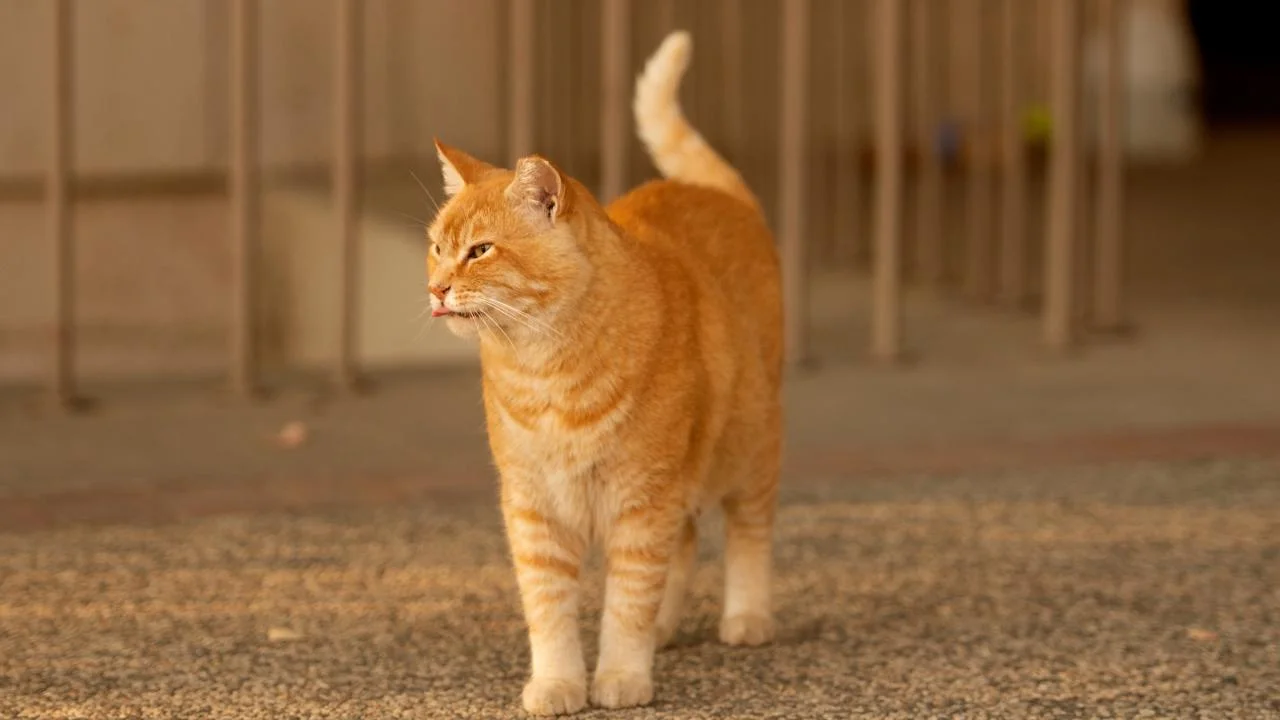Numerous mammals, ranging from household cats and dogs to massive pandas, employ scent as a means of communication with their peers.
 Cats like many other animals use scent to communicate with each other. A new UC Davis study characterizes the range of scent chemicals from cats and the bacteria that make them. Image Credit: University of California Davis.
Cats like many other animals use scent to communicate with each other. A new UC Davis study characterizes the range of scent chemicals from cats and the bacteria that make them. Image Credit: University of California Davis.
A recent investigation conducted by the University of California, Davis, reveals the method through which domestic cats convey signals to one another using scents produced by bacterial families residing in their anal glands.
This research contributes to the expanding body of knowledge on the interplay between microbes and odors in various mammals, encompassing domestic dogs, wild species like foxes, pandas, hyenas, and even humans.
This study was published in the journal Scientific Reports on November 8th, 2023.
The olfactory cues in cats originate from a combination of volatile organic compounds, including aldehydes, alcohols, esters, and ketones. Although largely imperceptible to human noses, these scents play a crucial role in the behavioral and social aspects of cats' lives. They serve to demarcate territory, attract potential mates, and deter rivals.
Led by Connie Rojas, a Postdoctoral Researcher collaborating with Professor Jonathan Eisen at the UC Davis Department of Evolution and Ecology and Genome Center, the study comprised three segments focusing on anal gland secretions from domestic cats.
The research employed DNA sequencing, mass spectrometry, and microbial culturing to examine the chemical composition of the secretions and the microbes responsible for their production.
The study involved 23 domestic cats undergoing elective procedures, such as dental cleaning, at the UC Davis Veterinary Medical Teaching Hospital, with owners providing written consent for their cats' participation in the research.
Highly Variable Microbiome
Five bacterial genera (Corynebacterium, Proteus, Bacteroides, Lactobacillus, and Streptococcus) predominated overall, yet there was significant variability in the microbial composition among individual cats.
Notably, older cats exhibited a distinct microbiome compared to their younger counterparts. While there were apparent distinctions in cats identified as obese, the limited sample size precluded definitive confirmation. Various factors, including the cat's diet, health conditions, and overall living environment, could influence microbial populations.
In the analysis of chemicals produced in the anal glands, the researchers identified hundreds of organic compounds. Genetic analysis indicated that bacteria residing in the anal glands might play a role in producing these compounds.
The researchers aspire to extend and broaden the scope of the study, encompassing a more extensive population of domestic cats and potentially exploring other cat species.
Source:
Journal reference:
Rojas, C. A., et al. (2023) Characterization of the microbiome and volatile compounds in anal gland secretions from domestic cats (Felis catus) using metagenomics and metabolomics. Scientific Reports. doi.org/10.1038/s41598-023-45997-1.